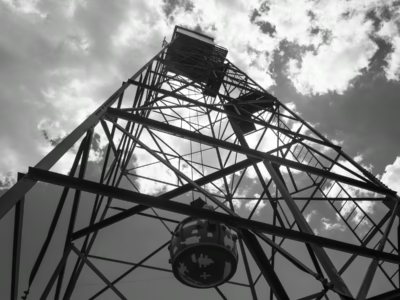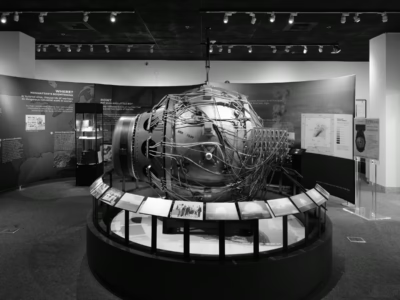Trinity
The Birth of the Nuclear Weapon

Explosive Power
24.8 kt
Hiroshima Equivalent Factor
1.65x
Dimensions
Approx. 5 feet (spherical)
Weight
Approx. 4 tons
Year(s)
1945
Purpose
Test of Fat Man design
About the Trinity Test
When they triggered the Gadget in New Mexico on July 16, 1945, they weren’t testing to see if a nuclear bomb would work. One of the designs for a nuclear bomb—the one used for Little Boy, the bomb dropped over Hiroshima—was so simple in its design that there was no doubt that it would explode. What they were testing in the desert was a more advanced design based on plutonium, one capable of causing even larger and more destructive explosions and which could be produced more quickly.
The Little Boy design slammed two pieces of uranium together, one 3D puzzle piece propelled with gunpowder toward the other puzzle piece. Once you had the uranium, building the bomb was relatively easy.
The Fat Man design used a shell of high explosives surrounding a ball of plutonium. The high explosives had to be shaped just so and the explosives detonated at precise times in order to compress the plutonium very evenly for the bomb to work as hoped. A lot could go wrong with this complicated design. And so they tested it.
In that star-flash scientists and soldiers and engineers and at least one journalist marveled at the yellow and green and purple light of the roiling, rising fireball. But they did not witness any dawning of some new age.
That age—the age of mass casualties and total war—was already upon them. In the months before, for example, the firebomb raids on Japan had indiscriminately burned to death hundreds of thousands of people and laid waste to city after city, horrors beyond waking comprehension today. That a single, long-range bomber and a single bomb could accomplish much the same thing was astonishing only in its efficiency.
Instead, what those scientists and soldiers and engineers and that journalist saw on that early morning was the full revelation of the great trap that humans had built for themselves, that science and technology seem to have inevitably reached out for, a trap that had been under construction perhaps since early man first raised a boney club to the sky.
What they saw was George Washington and Peter the Great, Rembrandt and the entire collection of the Hermitage, what they saw was Mecca and Jerusalem, Plato and Confucius, Beethoven and Shakespeare, every Christian, Atheist, Muslim, Buddhist and Jew, every capitalist, every communist, every man, every woman, every child, every reason for living and every reason for dying, all named as a sacrifice to some greater good.
Gallery

Click for details on the photographs
- This recreation of the Gadget, as the scientists named the device, is shown here in this full-scale recreation being lifted to the top of the 100-foot tall tower. Located at the Nuclear Museum in Albuquerque.
- A replica of the Gadget at the Atomic Museum in Las Vegas. They claim theirs is the most accurate replica but in what way I do not know.
- A replica of the Gadget at the Nuclear Museum in Albuquerque.
Want to see nuclear weapons for yourself, in person? Check out Where to See Nuclear Weapons in the Resources section.
Nukemap
NUKEMAP is a web-based mapping program that attempts to give the user a sense of the destructive power of nuclear weapons. It was created by Alex Wellerstein, a historian specializing in nuclear weapons (see his book on nuclear secrecy and his blog on nuclear weapons). The screenshot below shows the NUKEMAP output for this particular weapon. Click on the map to customize settings.

Videos
Click on the Play button and then the Full screen button on the lower right (the brackets on a mobile device) to view each video. Click on the Exit full screen button (the “X” on a mobile device) to return.
Further Reading
- Wikipedia, Atomic Archive, and the Atomic Heritage Foundation.
- The Day the Sun Rose Twice, by Ferenc Morton Szasz, University of New Mexico Press, 1984. It’s probably the definitive account.
- “A Few Words About This Picture,” Innovation and Technology, 1990
Initially, the Trinity “gadget” was going to be encased in a containment vessel to preserve the scarce plutonium in case the high-explosives in the device detonated but failed to produce a nuclear explosion. See also the photographs of Jumbo, the containment device, at the Atomic Archive. - “The First Atomic Bomb Mission: Trinity B-29 Operations Three Weeks Before Hiroshima,” Air Power History, Winter 2013. Aircrews observing and measuring Trinity and preparations for the nuclear test—including the detonation of 108 tons of TNT “seeded with small amounts of radioactive product”—at the Trinity site.
- Visit the site of the Trinity Explosion
Once a year the U.S. Army allows public access to the Trinity site. Be sure to watch the informational videos.

